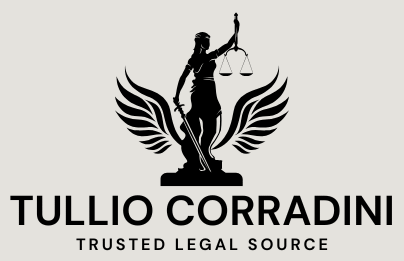All through the Supreme Court’s oral arguments in Merrill v. Milligan, a situation that could deal a significant blow to the Voting Rights Act, Ketanji Brown Jackson powerfully rebutted ideal-wing assaults on voting rights by using her personal “originalist” examination of the 13th, 14th and 15th Amendments to explain why congressional district maps are not able to constitutionally be drawn in a “race-neutral” way.
Liberal judges are not frequently adherents to originalism – a judicial solution that insists that constitutional provisions will have to be interpreted centered on the well-liked indicating they experienced at the time they were drafted, and that has typically been applied by conservatives to justify appropriate-wing positions this kind of as the overturning of Roe v. Wade. But in her defense of voting legal rights, Jackson brilliantly turned the tables on the proper by crafting her personal originalist argument to protect using race into account when drawing district maps.
“The framers by themselves adopted the equal security clause, the Fourteenth Amendment, the Fifteenth Amendment, in a race mindful way,” Jackson stated, responding to Alabama Solicitor Typical Edmund LaCour’s claim that maps ought to be developed in a “race-neutral” method.
At problem in Merrill is Alabama’s GOP-established district map, which consists of only a person Black-the vast majority district out of seven districts, irrespective of the fact that Black folks comprise 27 % of the population. LaCour was in impact arguing that a profitable obstacle to a district map demands proof of discriminatory intent. But Congress has evidently reported that a map violates the Voting Legal rights Act if its effects are discriminatory, regardless of the intent of the mapmakers.
The point out of Alabama maintains that the consideration of race in drawing maps violates the 14th Amendment’s equal safety clause, saying that it discriminates in opposition to white persons.
“I really do not assume we can suppose that just since race is taken into account that that necessarily creates an equivalent defense difficulty,” Jackson stated, education LaCour on the intent of the framers of the 14th Modification.
Jackson mentioned “they had been, in truth, attempting to assure that people today who experienced been discriminated from, the freedmen through the reconstruction time period, have been in fact introduced equivalent to anyone else in the society.” She claimed that “the total stage of the modification was to secure legal rights of the freed former slaves.”
The 13th Modification abolished slavery. The 14th Amendment prohibits states from denying equal protection of the law. And the 15th Modification forbids abridgment of the proper to vote on account of “race, colour, or earlier problem of servitude.”
Citing the report of the Joint Committee on Reconstruction that drafted the 14th Amendment, Jackson quoted Republican Rep. Thaddeus Stevens of Pennsylvania. When he introduced the modification, Stevens stated that “unless the Constitution should restrain them, people states will all, I fear, continue to keep up this discrimination and crush to loss of life the hated freedmen.” (Stevens could have been speaking about Alabama.)
“That’s not a race-neutral or race-blind thought in conditions of the cure,” Jackson noticed, noting that the drafters of the Civil Legal rights Act of 1866 “specifically stated that citizens would have the same civil rights as savored by white citizens. That’s the place of that Act, to make guaranteed that the other citizens, the black citizens, would have the identical as the white citizens.”
Due to the fact the framers ended up concerned “that the Civil Legal rights Act wouldn’t have a constitutional basis, which is when the Fourteenth Modification came into enjoy,” Jackson said. It provided “a constitutional foundation for a piece of legislation that was intended to make men and women who had less option and a lot less legal rights equivalent to white citizens.” That, Jackson advised LaCour, “was accomplishing what the Segment 2 is doing below.”
Segment 2 of the Voting Rights Act of 1965 prohibits any voting follow that “results in a denial or abridgment of the proper of any citizen of the United States to vote on account of race,” which occurs when minority voters “have considerably less option than other users of the citizens to take part in the political process and to elect associates of their option.” Segment 2 was enacted to enforce the 15th Modification.
In 1980, the Supreme Court ruled in Metropolis of Cell v. Bolden that in get to acquire relief beneath Section 2 of the Voting Legal rights Act, the plaintiff had to show that the abridgement of voting rights was intentionally discriminatory.
Two years afterwards, nonetheless, Congress amended Part 2 to specify that a voting method which has the outcome of abridging the ideal to vote because of to race, coloration, language or minority status is illegal, regardless of no matter if the plaintiff could demonstrate discriminatory intent. The discriminatory impact can be proved by taking into consideration the “totality of the circumstances.”
In January, a 3 choose-panel of the federal district court docket (together with two Trump-appointees) concluded that Alabama’s map likely violates Section 2 of the Voting Rights Act, and ordered the state to create a 2nd Black greater part or plurality district.
But a 5-4 conservative bulk of the Supreme Court halted the district court ruling and allowed the discriminatory map to be used in the 2022 midterm elections. The significant court docket read oral arguments in Merrill on October 4.
Even the proper-wingers on the court docket appeared hesitant to undertake LaCour’s invitation to require discriminatory intent, which Congress has obviously turned down. But never be amazed if they obtain a narrower ground on which to uphold Alabama’s racist map.
They could possibly rule that the new the vast majority-Black district could not be “reasonably compact” to fulfill the exam set forth in the Supreme Court’s 1986 decision in Thornburg v. Gingles. It states that in buy to effectively obstacle redistricting maps that illegally dilute the voting power of a minority group, the plaintiff ought to clearly show that the team is sufficiently large and compact to represent a greater part.
Brett Kavanaugh cited Alabama’s argument that the “district is too sprawling to be fairly compact or fairly configured.” Samuel Alito characterised that argument as “basic” and “least considerably-reaching.”
These types of a ruling would present considerable hurdles to long run difficulties to redistricting maps which claim that they dilute the collective voting electric power of Black people today.











More Stories
How Political Parties Work
Humane, Orderly Border Policies Needed
Conservatives only care when they’re the ones suffering